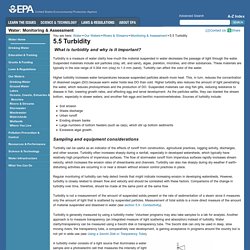

Here's why India may be on the brink of an unprecedented full-blown water crisis - timesofindia-economictimes. Rahul Sachitanand & Sandhya Ravishankar, ET Bureau Jul 5, 2015, 10.28AM IST (Water crisis ) A steel wheelchair occupies pride of place in the home of A Swami, a resident of Kottala village in Nalgonda district of Telangana.

When you walk into the small two-room dwelling, you immediately see why. Swami is barely a couple of feet tall, with an outsize head and a shrunken body. He contracted fluorosis as a baby and that stunted both his mental and physical progress. The government's balm has been a Rs 1,500 monthly pension and the wheelchair, but he and his father (who has a debilitating neurological variant of the illness, which has forced him to give up his job as the village barber) are both prime examples of the hazards of overdrawing groundwater resources. The fluoride count in Nalgonda is as much as 100 times the permissible limit and the likes of Swami and his family have suffered for generations from this overuse of groundwater. Sommelier. A Little Trick for Converting Centigrade to Fahrenheit. Turbidity - Water Properties, USGS Water Science School. Sediment-data collection in the Little Colorado River a kilometer upstream from the Colorado River, Grand Canyon, Arizona Credit: USGS View full size Turbidity is the measure of relative clarity of a liquid.

It is an optical characteristic of water and is an expression of the amount of light that is scattered by material in the water when a light is shined through the water sample. The higher the intensity of scattered light, the higher the turbidity. Material that causes water to be turbid include clay, silt, finely divided inorganic and organic matter, algae, soluble colored organic compounds, and plankton and other microscopic organisms.
Turbidity makes water cloudy or opaque. Turbidity and water quality Sediment-laden water from a inflow stream entering a much clearer Lake Tuscaloosa, Alabama, USA (Credit: City of Tuscaloosa, Alabama) Credit: City of Tuscaloosa, Alabama View full size Turbidity and human health Measuring turbidity. Monitoring & Assessment. What is turbidity and why is it important?

Turbidity is a measure of water clarity how much the material suspended in water decreases the passage of light through the water. Suspended materials include soil particles (clay, silt, and sand), algae, plankton, microbes, and other substances. These materials are typically in the size range of 0.004 mm (clay) to 1.0 mm (sand). Turbidity can affect the color of the water. Higher turbidity increases water temperatures because suspended particles absorb more heat. Soil erosion Waste discharge Urban runoff Eroding stream banks Large numbers of bottom feeders (such as carp), which stir up bottom sediments Excessive algal growth. Sampling and equipment considerations Turbidity can be useful as an indicator of the effects of runoff from construction, agricultural practices, logging activity, discharges, and other sources.
Regular monitoring of turbidity can help detect trends that might indicate increasing erosion in developing watersheds. Deadly lake turns animals into statues - environment - 01 October 2013. (Images: Nick Brandt) ACCORDING to Dante, the Styx is not just a river but a vast, deathly swamp filling the entire fifth circle of hell.

Perhaps the staff of New Scientist will see it when our time comes but, until then, Lake Natron in northern Tanzania does a pretty good job of illustrating Dante's vision. Unless you are an alkaline tilapia (Alcolapia alcalica) – an extremophile fish adapted to the harsh conditions – it is not the best place to live. Temperatures in the lake can reach 60 °C, and its alkalinity is between pH 9 and pH 10.5. The lake takes its name from natron, a naturally occurring compound made mainly of sodium carbonate, with a bit of baking soda (sodium bicarbonate) thrown in. Photographer Nick Brandt, who has a long association with east Africa – he directed the video for Michael Jackson's Earth Song there in 1995 – took a detour from his usual work when he discovered perfectly preserved birds and bats on the shoreline. Water Research. Water Filtrates. Land Water BioMass. Earth Scientia. Earth Nouveau. Oceana Currents. Weather. New Ecology. Recycle Reuse.
Plant Cultivation. Feed The People. Food Frights. Food Safety. Health Substantia. Sustenance. Life Sciences.